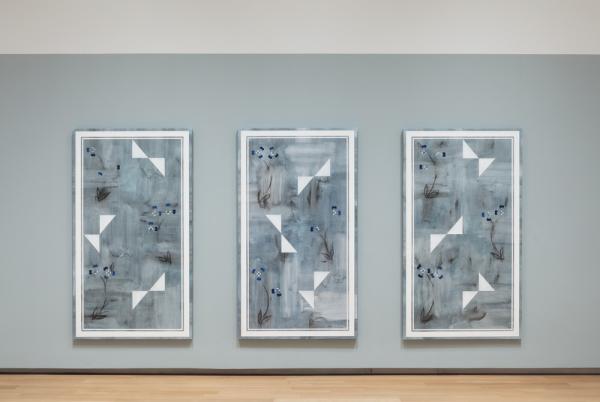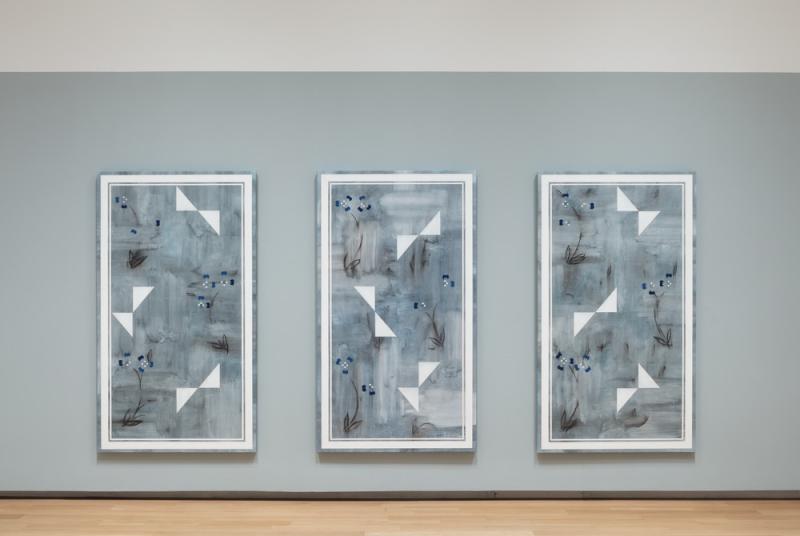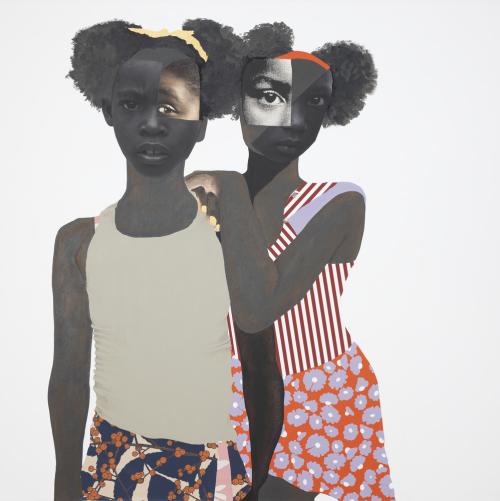Skip to main content
Ornament for Extraordinary Architecture
Artist
Kamrooz Aram
(Born 1978, Iran)
Date2018
MediumOil, wax, oil crayon and pencil on canvas
DimensionsOverall: 78 × 168 × 1 5/8 in. (198.12 × 426.72 × 4.13 cm)
Unframed (Each Panel): 78 × 44 × 1 5/8 in. (198.12 × 111.76 × 4.13 cm)
Unframed (Each Panel): 78 × 44 × 1 5/8 in. (198.12 × 111.76 × 4.13 cm)
Credit LineCollection of the Modern Art Museum of Fort Worth, Gift of the Director's Council and Museum purchase, 2018
Object number2018.3.A-C
Status
Not on viewCopyright© Kamrooz Aram
Category
Label TextKamrooz Aram was born in Iran and grew up in the United States. With roots in both non-Western and Western cultures, the artist proposes a global and inclusive approach to abstract painting that takes into account the importance and influences of both Persian art and architecture and Western modernism. For example, non-Western “decorative arts” and antique Iranian ceramics are regularly integrated into his sculptural tableaux, which often also feature geometric motifs associated with the avant-garde languages of twentieth-century European abstraction. Mixing these traditions, the artist demonstrates the formal and conceptual similarities his sources share.
Aram created Ornament for Extraordinary Architecture for his 2018 FOCUS exhibition at the Museum. The triptych’s title nods to the Modern’s Tadao Ando–designed building, and the blue-gray palette suggests the architect’s iconic concrete elements. The painting also includes blue floral patterns based on those found in Persian carpets. Woven into textiles for generations, the flowers symbolize rebirth or prosperity. By examining such intersections in varied visual cultures, Aram suggests a revision to the canon of Western art history, which has conventionally portrayed the art and ornament of the East as minor. The impact of Persian textiles and Eastern art in general is documented in modernist architecture and in the work of artists like Wassily Kandinsky and Frank Stella. Yet Eurocentric art history has positioned Persian art and its connections to modernism as a footnote. Aram’s work renegotiates this history by balancing architecture, ornament, and twentieth-century abstraction with equal footing, highlighting commonalities rather than differences.
Aram created Ornament for Extraordinary Architecture for his 2018 FOCUS exhibition at the Museum. The triptych’s title nods to the Modern’s Tadao Ando–designed building, and the blue-gray palette suggests the architect’s iconic concrete elements. The painting also includes blue floral patterns based on those found in Persian carpets. Woven into textiles for generations, the flowers symbolize rebirth or prosperity. By examining such intersections in varied visual cultures, Aram suggests a revision to the canon of Western art history, which has conventionally portrayed the art and ornament of the East as minor. The impact of Persian textiles and Eastern art in general is documented in modernist architecture and in the work of artists like Wassily Kandinsky and Frank Stella. Yet Eurocentric art history has positioned Persian art and its connections to modernism as a footnote. Aram’s work renegotiates this history by balancing architecture, ornament, and twentieth-century abstraction with equal footing, highlighting commonalities rather than differences.










